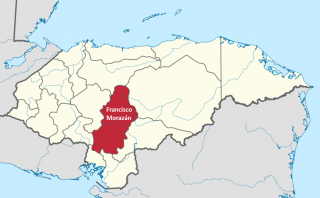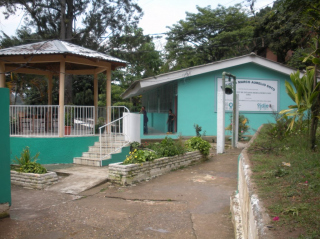San Juancito, Honduras
![]()
![]()
![]()
![]()
![]()
![]()
![]()
![]()
![]() Click on Programs to learn more about their work in this community
Click on Programs to learn more about their work in this community
General Information

| Population* | 2000 |
| Number of homes | 500 |
| Avg # of people per home | 4 |
| Number and % of children |
(0-5yrs): 130/8.3% (0-9yrs): 600/30% |
| Electricity | Yes |
| GPS |
N 14° 13.528’ W 087° 04.109’ |
| Altitude | 1771m |
| Municipality | Valle de Angeles |
| Department | Francisco Morazán |
| Corresponding Health Center | CESAMO-San Juancito |
| Distance from compounds | 30 minutes |
| Road conditions | Good |
* Population does not reflect how many patients will be seen on medical
brigades as many people from surrounding communities come seeking
Medical Brigades medical attention.
Top Needs Expressed
The top needs expressed by the key community members are a waste management system, higher-powered electrical system, 2 more school rooms, and permanent full-time physician at the health center.
San Juancito’s educational system includes Kinder, Primary, 
Middle, and High schools (through 12th grade). At the high school level, computers and farming are offered as vocational programs. There are 225 students at the schools and Ana Raquel Murillo Lopez is the school director. It is approximated that about 80% of the community knows how to read and write.
San Juancito has a water system that was constructed in the 1980s and is still in good condition. Water arrives every day and it is regularly chlorinated1 though the interviewee was not certain how frequently that was exactly. 100% of the community is connected to the water system. There are 3 different Water Councils to account for the different sectors of the city.
San Juancito does have a health center in the community that is staffed by a contracted physician, Dr. Brenda Vaiza and a full-time nurse, Lic. Dilcia. There is a health committee with 5 volunteers that support the health clinic. Dental care is not available in community.
The most common illnesses seen by community members are respiratory infections and hypertension. Approximately 100% of the community has latrines that currently function. 0% has eco-stoves (estufas justas); most people have electric stoves or normal stoves with chimneys. About 50% is estimated to have cement floors and 60% has pilas (water storage units).
The average family income per month is estimated to be 1250 Lempiras, which is approximately L250 (US $13.23) per person3. The majority of homes are made of adobe. The main form of employment is in agriculture as workers on rented land. The main products that are cultivated in the community are coffee, corn, plantains, and tomatoes. Members of San Juancito have access to credit from a local cooperative for coffee workers. Otherwise, there is no community bank, though they would be interested in forming one in the future.
San Juancito also receives medical brigades from the Honduran Baptist Church, most recently in January 2009 and they haven’t since returned. In 2009, Yo Sí Puedo, an adult literacy program, was also active in San Juancito. Also, in 2010 OEI (Organization of Ibero-American States) has donated equipment for a small computer lab, library, and Kindergarten materials to the school.
San Juancito is a small city that is known for its formerly active gold and silver mines and its time as the location of the American Embassy headquarters. Many natural resources have been taken out of this community, but the city has still been able to maintain its productivity due to its convenient proximity to the main highway between Tegucigalpa and Valle de Angeles.
|
Education |
47th |
|
Water |
79th |
|
Health |
57th |
|
Socio-economics |
39th |
|
Collaboration |
27th |
|
Overall |
60th |
Total communities evaluated: 97
Source of information: Key informant interview, Centro de Salud statistics
Date of interview: 19 May 2010
1The accepted regulation frequency for chlorinating water is every 4 days.
2CESAMO and CESAR are terms used for types of health centers. CESAMOs are larger, more comprehensive facilities that usually have a physician on staff at all times and occasionally a dentist. CESARs are more remote, less equipped facilities, usually with 1-2 nurses on staff.
3According to Red Solidaria and World Food Programme in Honduras, the average family is approximated at 5 people per household, the poverty line is L930 (US$49.23) per person per month, and the extreme poverty line is L617 (US$32.66) per person per month.